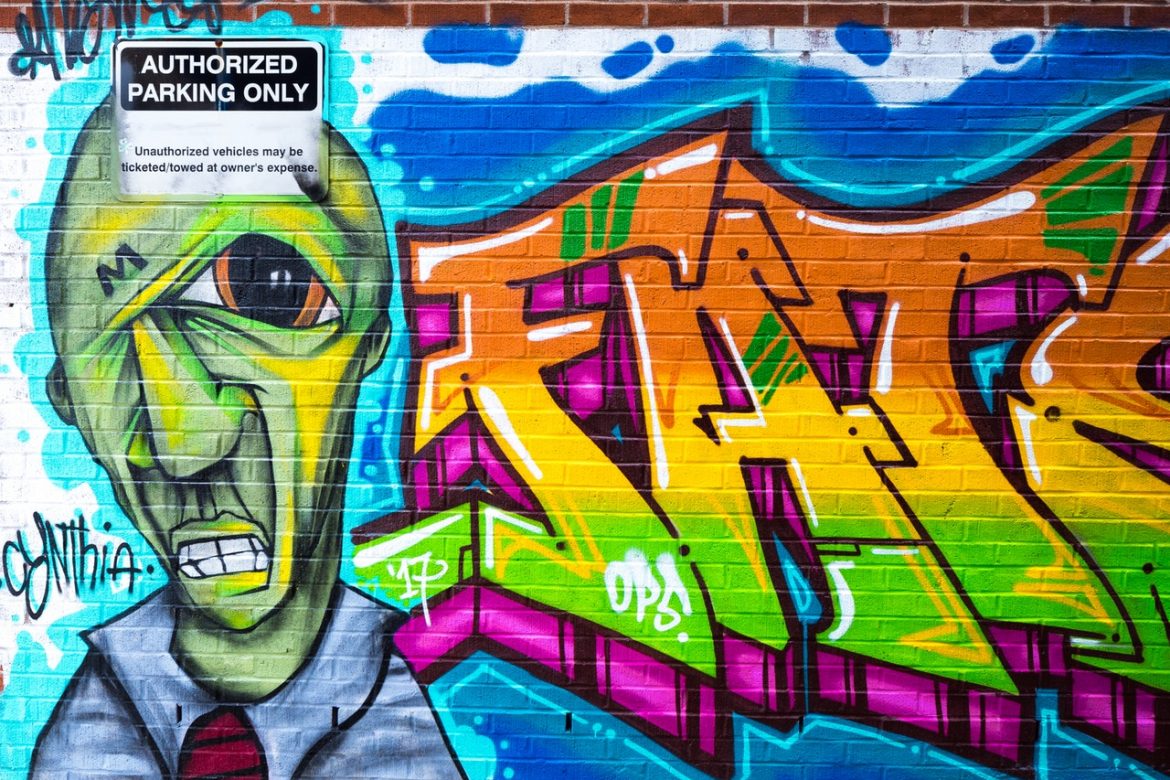From Basquiat to Banksy, graffiti art has been elevated to new heights thanks to a constant influx of talented artists around the globe. With the art world becoming more open to this form of contemporary art, it is no longer limited to the outdoors either. There are people who collect graffiti art, use them for business logos, album covers, and even wall art. You might even find unique tattoo ideas from different graffiti art styles!
The Origins of Graffiti
Graffiti comes from the Italian word “graffiato”, which means scratched. The term was originally used in reference to drawings of figures and various other inscriptions that were found on walls of ancient sites and ruins. In fact, the only known source for Safaitic, an ancient form of Arabic, are inscriptions made upon boulders found in Southern Syria. The use of Safaitic dates back to the first century BC to the fourth century AD.
In Pompeii, over 11,000 examples of graffiti have been uncovered. Some of which were first recorded during the 1800s. Unfortunately, some of these did not survive exposure to the elements, though documentations of their existence do remain. So, what do the Pompeii graffiti reveal? Archeologists say that they mostly comprised of games and friendly messages.
Their works were simpler, but it’s safe to say that the ancients were the first graffiti artists. In fact, they embody much of what contemporary artists stand for: spontaneity and humor. After all, even the ancients needed things to do when bored!
The Romans and The Greeks
One of the first examples of “modern graffiti” can be found in Ephesus, an ancient Greek city. These ancient inscriptions were found near a stone walkway and depicted a handprint that closely resembles a heart, a footprint, a number, and the image of a woman’s head.
Ancient Roman graffiti were comprised of love declarations, insults, jokes, political rhetoric, and even magical spells! This is one of the reasons why archaeologists look into these for clues when it comes to learning more about what street life was like in ancient Rome. Needless to say, they enjoyed their sexual innuendos quite a lot.
Ancient Graffiti Art and Its Place in History
In Sigiriya, Sri Lanka, there are over 1,800 individual graffiti inscriptions left on a citadel between the 6th and 18th centuries. Studies suggest that these were etched by its esteemed visitors, including royalty, clergy, officials, and scholars.
The citadel’s mirror wall bears one of the most extensive collections of ancient writing, including topics such as satires, laments, love, and even prose. In fact, many of the inscriptions on it show a high level of literacy and a deep love for art and poetry.
Other cultures that have their own examples of graffiti include the Maya, the Vikings, and the Varangians. Much like the Romans and Greeks, the inscriptions they left behind have provided scholars with a better understanding of their language and lifestyles. Like any other form of art, graffiti has an important place when it comes to art history. It is a record of the particular period in which it was made, and provides an unfiltered look into what society may have been like at the time.
Graffiti Trivia: Did you know that famous Renaissance artists such as Michelangelo, Pinturicchio, Ghirlandaio, Raphael, and Filippino Lippi once went into the ruins of Domus Aurea and etched their name into the stone to commemorate the event?
Kilroy Was Here and World War II Graffiti Art
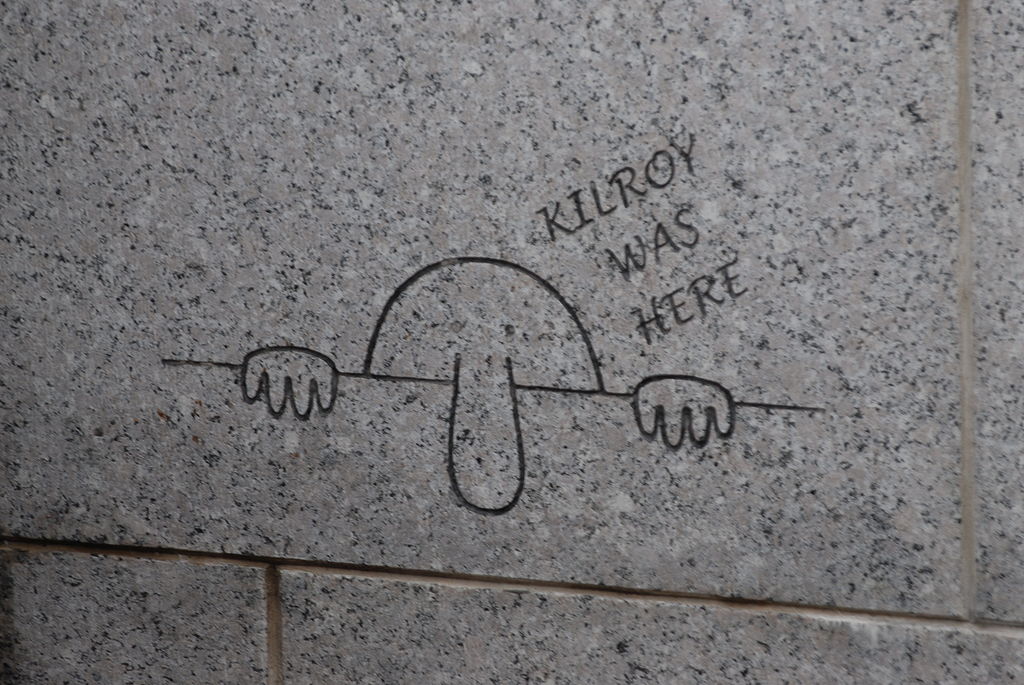

One of the most commonly seen graffiti during World War II was “Kilroy Was Here.” It depicted a bald man peeking over walls, with his huge sausage-shaped nose sitting on top of it. Art historians see it as the American equivalent of the Australian one, “Foo Was Here”, which was popular during World War I. Though no one is certain who Kilroy really is and who was first to do it, the image became so popular among U.S. servicemen that they kept turning up wherever they may have been stationed.
For these men, many of whom were thousands of miles away from home, it was their way of making themselves “known” in a foreign land. As if to make sure that whatever may happen next, they have left their mark even in such a small manner. It is no different from the motivations behind some contemporary graffiti art: to create something that will last.
Contemporary Graffiti and Hip Hop Culture
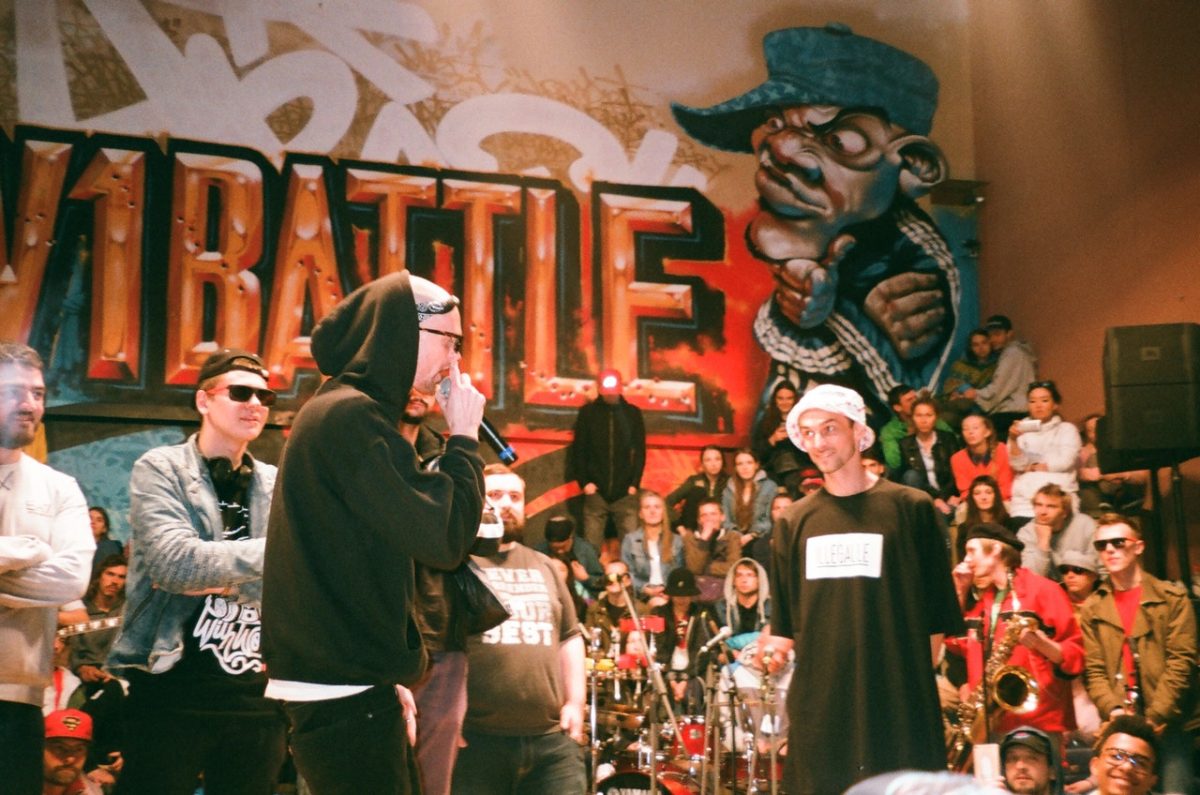

Following the end of World War II, the United States saw a rise when it comes to various subcultures. Studies suggest that the contemporary graffiti movement began during the 1960s and was prominent in the Latino and Black neighborhoods of New York City. If you look at the history of hip hop, you’re sure to find a few chapters dedicated to how graffiti helped it develop, and vice-versa.
Much like hip-hop, graffiti art also began as a competition of sorts, with artists trying to outdo each other and differentiate themselves from the rest. This was also when the use of “tags” or “logos” were first seen, with “taggers” pushing the boundaries when it comes to the location of their pieces. From the sides of buildings, the underside of bridges, to even public transportation—it’s all about standing out.
Graffiti’s Political Importance


If we were to put things simply, graffiti gives the average person a platform to speak their mind. This is exactly the philosophy behind its use in politics and also why it has become one of the most enduring acts of protesting. There are many examples of this around the world. With one powerful statement in a place where people are able to easily read it, an individual can create change and empower a movement.
Much like how it gave insight to archaeologists when it came to the prominent ways of thinking during certain periods in history, contemporary graffiti—particularly political ones—can also provide clues on the democratic state of a country. In some countries, you can get arrested for it.
Is Graffiti Contemporary Art or Vandalism?
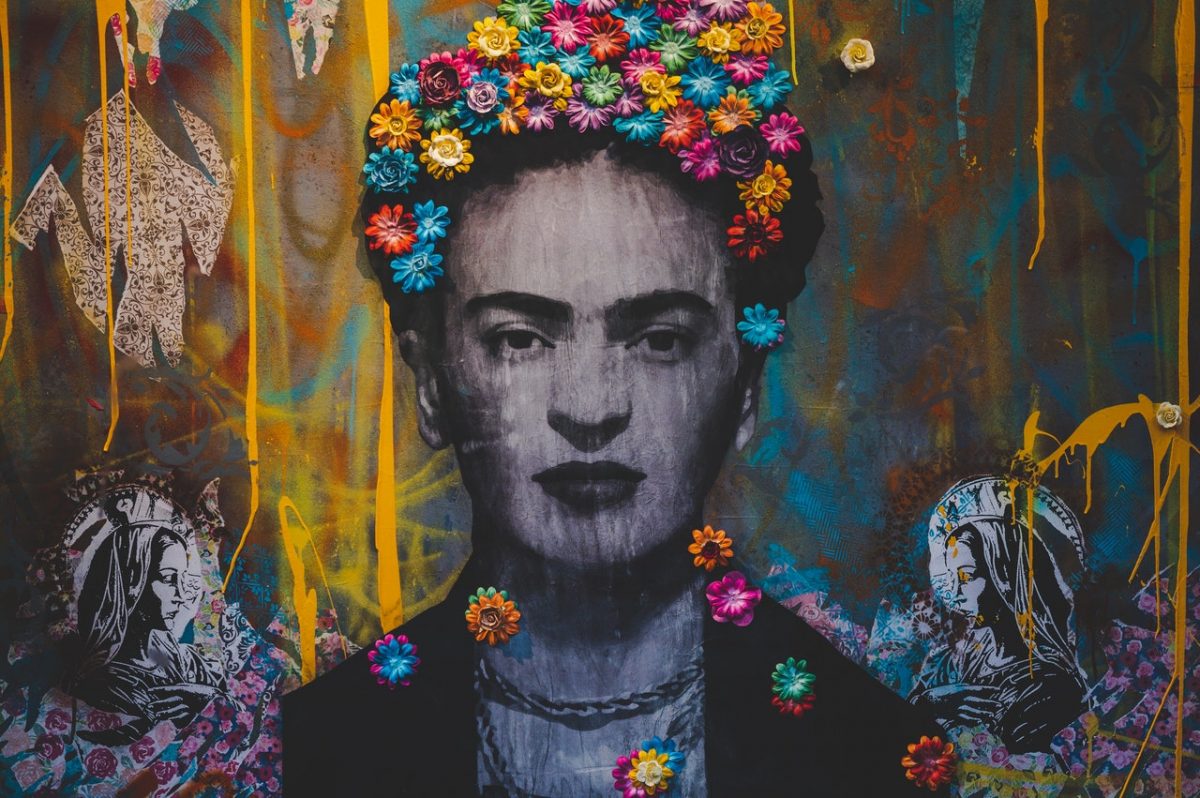

What differentiates graffiti from vandalism? Many will tell you that intent matters. Vandalism is usually motivated by a need to destroy or desecrate. Most vandals also do not discriminate and will “tag” just about anything for the fun of it.
In contrast, graffiti art is done with intent. Some artists use it to highlight a movement, spread a message, or simply beautify a space. Just take wall murals for example. Many contemporary graffiti artists create public art as a way of “speaking” against the elitism that’s prevalent in the art world. They make art more accessible and in a way, less pretentious.
The Difference Between Graffiti and Street Art
Aside from intent, another factor to consider is the legality of the act. This is the primary difference between graffiti and street art. Graffiti is illegal and done stealthily. It’s safe to say that these two things are big factors as to why it has mostly remained an underground movement. Of course, there are select graffiti artists who have managed to make a name for themselves in the mainstream, such as Banksy.
On the other hand, street art is often created by commission and with permission from the city. These artworks are meant to add more color to neighborhoods or increase the value of buildings. This is also why street artists are more than happy to sign their creations with their real names, whereas a graffiti artist would have to use a pseudonym.
What Types of Paint are Used in Graffiti?
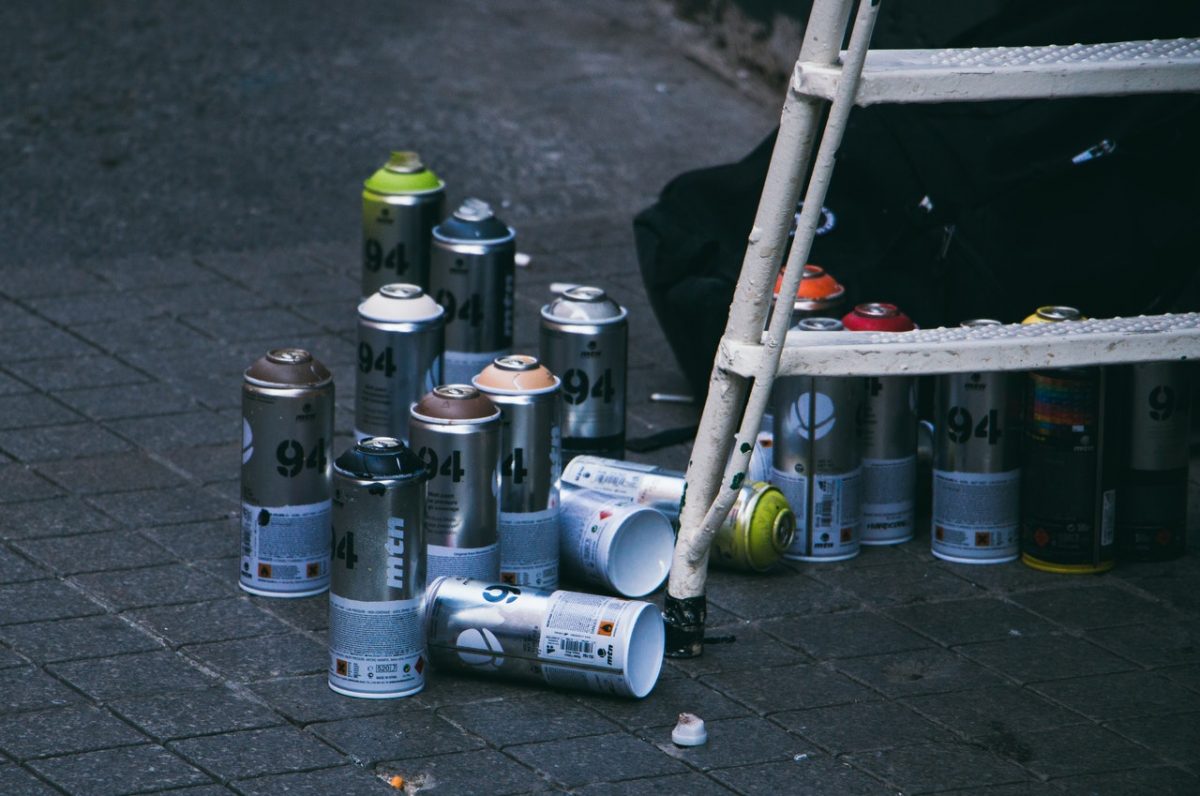

The most common media used for graffiti or any type of urban art is aerosol spray paint. It is the most accessible and affordable option, even today. However, the more creative sort have found other mediums to express themselves. It isn’t too unusual to find graffiti that has been done using marker pens, wall paints, etching tools, and even fire extinguishers! The use of a wall stencil is also common among some artists.
Where is Graffiti Usually Found?
The truth is, no place is too sacred or too difficult for a creative graffiti artist. From bathroom stalls, subways, government buildings, and even in places of worship—you might find examples of it. Some places in the world even have designated areas meant for graffiti wall art so that people can enjoy them.
Best Places to See New York Graffiti Art
- East Harlem’s Graffiti Hall of Fame
- Audubon Mural Art Project
- The Bushwick Collective
Best Places to See French Graffiti Art
- Rue Laurence Savart
- Place Igor Stravinsky
- Bercy Skate Park, 12th Arrondissement
Best Places to See Japanese Graffiti Art
- Tennozu Isle
- Ura-Harajuku
- Edogawall
- Shibuya
The World’s Most Popular Graffiti Artists
With graffiti gaining more recognition as a contemporary art form, it only follows that some of its artists are gaining more credibility as well. These days, graffiti art prints can go for thousands—even millions—of dollars, depending on the subject and the artist behind it. A Basquiat piece was once auctioned off for $110.5 million, beating Andy Warhol’s previous record.
Shall we get to know some of these artists better?
Jean-Michel Basquiat
There’s little debate when it comes to him being the most expensive graffiti painter in contemporary art history. Jean-Michel Basquiat first came into prominence during the late 70s and was a product of the thriving New York art scene at the time. Like many graffiti artists, he never received formal art education, but had a deep reverence for the art form. In fact, before creating on canvas, his early work consisted of spray-painting trains and buildings around Lower Manhattan.
Today, Basquiat paintings are displayed in some of the biggest museums around the world. While you may not be able to purchase an original from him, you can still get to enjoy his vibrant works of art through other means, such as a graffiti art book.
Keith Haring
Keith Haring’s work easily stands out from the crop of other graffiti artists even today. Haring is known for his drawings, which were displayed in NYC’s subways. Though simple, these chalk drawings helped him gain recognition. After gaining mainstream attention, Haring’s murals became larger and more colorful. The artist was able to create more than 50 pieces of public art, between 1982 and 1989, which he created voluntarily for day care centers, hospitals, and schools.
Banksy
Banksy is, arguably, one of the most recognized graffiti artists of this generation. He is also one of the most enigmatic, since no one really knows for sure who he is. Banksy’s work mainly focuses on politics and satire, which is also why he has become so notorious. He isn’t limited by locality either and plenty of Banksy art has been found around the world. Unlike other artists, however, he does not seek to be compensated for his work. Despite this stance, many people do steal the public art installations he puts up, whether it be for their personal collection or for resale.
David Choe
David Choe’s first foray into art was through the graphic novel Slow Jams. There were only 200 copies of this, which he freely gave away in hopes of attracting a publisher. From here, he began receiving commissions to do murals from the likes of Heidi Fleiss, Sean Parker, and Mark Zuckerberg. As compensation for the work he did for Facebook’s offices, the artist opted for company stock instead of cash. As of 2012, its value had risen to $200 million. Like the other graffiti artists on our list, Choe has also used his talent for charity. This includes collaborating with various foundations, such as Yle Haiti, for fundraising events.
Shepard Fairey
Street artist Shepard Fairey is the brains behind the OBEY Clothing brand. He is best known as the artist behind the “Hope” poster that was used by Barack Obama’s supporters during the 2008 U.S. presidential election. Aside from this, he has also created the Mandela mural that can be seen on Juta Street, Braamfontein, Johannesburg. Many consider it to be a sequel to the iconic “Hope” poster. Fairey’s work isn’t entirely focused on activism, but he has always been outspoken about social issues.
Appreciate Graffiti Art For What It Is
By definition, art is an “expression of human creativity, skill, and imagination.” Art is often appreciated for its aesthetic value or the effect they have on the emotions of an observer. At the end of the day, there is no single definition for what truly can be considered art. Perhaps that is the beauty of graffiti art as well. Their meaning changes depending on who is looking at it.

